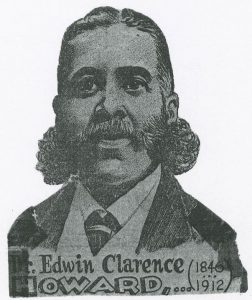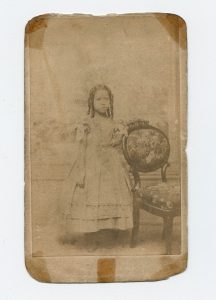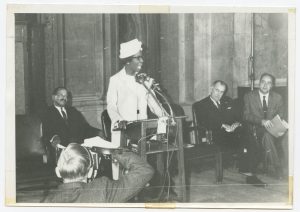By Susan Martin, Senior Processing Archivist
In previous Beehive posts, a few of our contributors have introduced you to the terrific DeGrasse-Howard papers here at the MHS. Crystal Lynn Webster discussed themes in the diary of Dr. Edwin Clarence Howard, and Mia Levenson wrote about the account book of Edwin’s uncle, Dr. John Van Surley DeGrasse. I’d like to revisit the collection, particularly because of the great work our digital team has done to digitize it in its entirety.
The MHS collection of DeGrasse-Howard papers is small but fascinating. Several members of the related DeGrasse, Howard, Downing, and Asbury families are represented, and each probably deserves a post of their own. Isaiah George DeGrasse and Howard DeGrasse Asbury were clergymen, John Van Surley DeGrasse and Edwin Clarence Howard were physicians, and George T. Downing was a civil rights leader. John also served as a medical officer during the Civil War.

Like Webster, I found myself particularly drawn to the diary of Dr. Edwin Clarence Howard (1846-1912), kept in 1865 while he was a student at Liberia College in Monrovia, Liberia. Edwin went on to become, in 1869, the first African American to graduate from Harvard Medical School. He practiced in Charleston, S.C. before settling in Philadelphia, and several biographical sketches I found note his impressive service during the 1870 smallpox epidemic there. He also played a part in the establishment of both the Frederick Douglass Hospital (1895) and the Mercy Hospital (1905) in Philadelphia.
This diary reveals Edwin at the beginning of his career, struggling with all the uncertainties of a young man far away from home. One of the things that makes the volume intriguing is that Edwin wrote about half of it in code. Much of this code consists of simple letter substitution (each letter represented by the one just before it in the alphabet), but he also incorporated French and Latin words and phrases and even what appear to be Greek symbols. Certain people are represented by initials, such as “O,” who was a woman with whom he apparently had a relationship. For example, in this entry from 1 April 1865, he switched in and out of code within a single sentence.
I am now almost always harrassed [sic] with unpleasant feelings, and were it not for a certain gnod que I gaud hm [hope that I have in] O I think I wd. use my utmost endeavours to return home.
This unhappy passage was written after a scolding from a doctor Edwin described as “pthsd shfgs,” or “quite tight”!
I hope someday to be able to spend more time with this interesting diary. While most of the entries are of a personal nature, Edwin also described the treatment of patients and his other daily activities, including long walks, social calls, a liberal amount of pipe smoking, and the occasional performance on his concertina.
Unfortunately, the DeGrasse-Howard papers contain only a few passing references to Edwin’s sisters, who were both accomplished educators. His older sister, Adeline Turpin Howard (1844-1922), became the principal of the Wormley School in Washington, D.C. His younger sister, Joan Imogen Howard (1848-1937), was the first Black graduate of the Girls’ High and Normal School in Boston. None of the siblings ever married or had children, and all three are buried in Eden Cemetery outside Philadelphia.
As I mentioned above, the entire DeGrasse-Howard collection has been digitized by the MHS digital team, so you can browse the papers at your leisure. The MHS also holds a collection of 24 DeGrasse-Howard photographs, which have also been digitized. My favorite is probably this Civil War-era photograph of a young Georgenia Cordelia DeGrasse, Edwin’s cousin.

And the last photograph in the collection depicts Rep. Shirley Chisolm speaking at an event in 1968 with Howard DeGrasse Asbury.

We hope you’ll take some time to look through both of these amazing collections.

